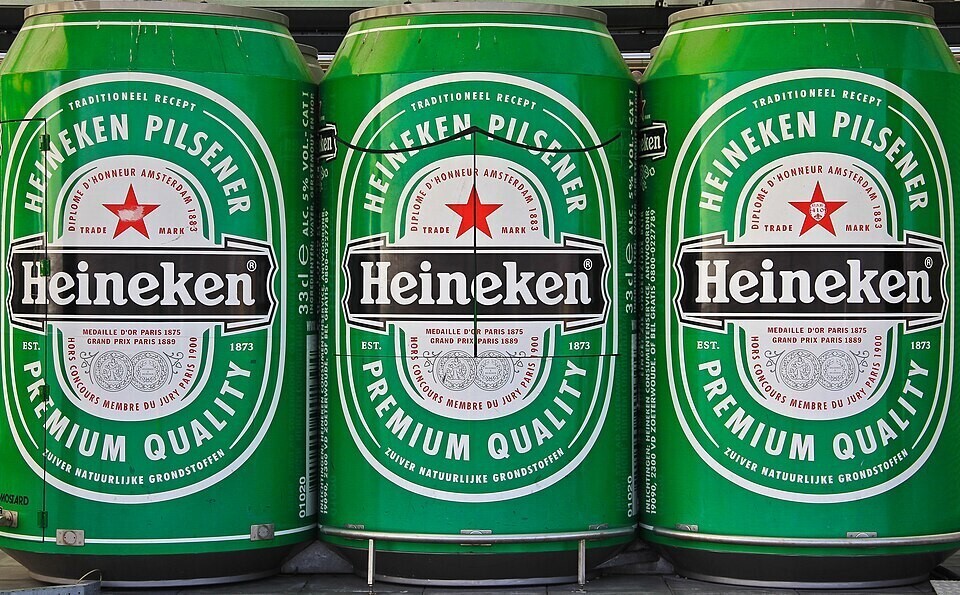

At a time when the whole world is experiencing inflation, tariff changes and shifting consumer behaviours, Heineken N.V. stands out as an example of operational resilience and foresight. The Dutch brewing company has been operating in a challenging environment with increasing US tariffs on aluminium and steel packaged goods (including beer). However, the company continues to outperform its competitors, demonstrating that strategic dexterity and sustainability measures can effectively address persistent challenges in the beverage industry.

Localised production: a smart tariff shield
Heineken's minimal use of cross-border beer exports is key to its insulation from the US tariff storm. The company brews nearly 95 per cent of its beer in the same region where it is consumed. In the US, only about 3 per cent of its global sales come from the US, and almost all of it is locally brewed, effectively removing the liability of the 25 per cent tariff on imported aluminium cans and canned beer that has been instituted after April 4, 2025. Therefore, Heineken is better positioned vs competitors like AB InBev, who remain more exposed to logistics dependent on imports.
In a February 2025 investor call, CEO Dolf van den Brink reinforced this approach, stating, “Our localised production model is a shield against trade volatility, enabling us to adapt quickly to regional challenges.” The foresight in such a model has paid off handsomely in 2024 and 2025, helping Heineken report steady growth despite European stagnation and Asian currency fluctuations.
Navigating packaging volatility with sustainability
The beverage industry has experienced escalating costs for cans after a US tariff on consumer packaged goods using aluminium was introduced. AL Circle reports that consumption of aluminium scrap increased to 660,000 tonnes in 2024, as companies shifted to recycling aluminium, which is exempt from the 50 per cent tariff established by the Trump administration.
Heineken has been preparing for this transition for a long time. By 2024, 44 per cent of its bottles and cans will already contain recycled content. Further, 39 per cent of the beer sold is in reusable packaging. These figures will not only allow Heineken to meet the EU's Circular Economy Action Plan ahead of time but will also allow Heineken to hedge against rising primary aluminium costs, not to mention Heineken's timely efforts to position itself in the USD 36.95 billion US beverage can industry, where the emphasis continues to shift toward sustainable inputs.
Also read: Constellation blames Trump's aluminium tariffs for disappointing quarterly results
Premiumisation and adjacent markets: expanding the revenue mix
Heineken has pursued premiumisation while traditional beer markets stagnate, away from growth. Heineken leads the 20 per cent premium segment of the beer market and had 8.8 per cent volume growth in 2024, which continues, according to the early trends being reported in the overall beer market. Heineken's premiumisation strategy pays off in Brazil with 12 per cent YoY sales growth, despite a 15 per cent currency devaluation.
Heineken is diversifying further beyond beer. A £40 million (USD 53.6 million) investment in pubs in the United Kingdom and a stake in TENZING, an energy drink start-up, demonstrate a purposeful pivot towards wellness and non-alcoholic alternatives in response to health-conscious consumption patterns, as beer consumption is forecasted to decline by 0.5 per cent in 2025.
Strategic cost discipline and investor value
In a turbulent global context, Heineken has exhibited commendable financial discipline. In 2024, the brewer reported an operating profit margin of 15.1 per cent, supported by productivity improvements and pricing discipline. It has returned €2.25 billion (USD 2.63 billion) to shareholders in the form of dividends and buybacks and has announced an additional €1.5 billion (USD 1.63 billion) buyback programme for 2025, a reassuring signal of confidence and cash-flow strength.
The company’s shares are still reasonably priced at a forward P/E of 15.4 and a 4.3 per cent dividend yield, which makes it a strong option for value investors wanting established, steady returns while the geopolitical situation remains unsettled.
Risks remain, but buffers are strong
Despite Heineken’s many strengths, there are still risks. Currency translation losses, most significantly, in Brazil and Nigeria, accounted for €1.655 (US 1.815 billion) billion of cost in 2024. negatively affecting profitability. And while tariff exposure to the US is limited today, trade concerns or aluminium supply chain disruptions could affect packaging profits in future years.
Still, Heineken's deepening momentum in recycled aluminium, local production, and ESG are strong buffers. As Dolf van den Brink observed, the company is “flexibly allocating capital and resources”, indicating detailed scenario planning and the capacity to pivot into challenging conditions.
A rare blend of stability and growth
Heineken's strategic approach combines localisation, sustainability, and innovation, enabling agility in a turbulent era. Its strategic decisions, including recycled aluminium, premium brands, and expansion beyond beer, offer long-term investors growth opportunities.
Also read: Americas fuel Ardagh’s Q2 2025 growth as European momentum slows
Responses








